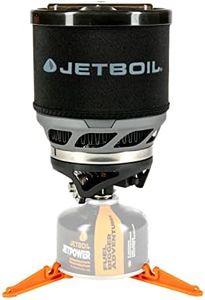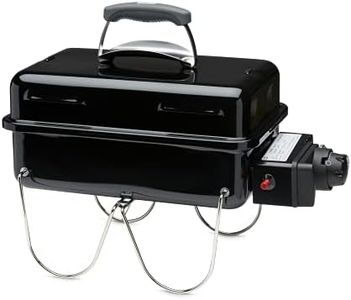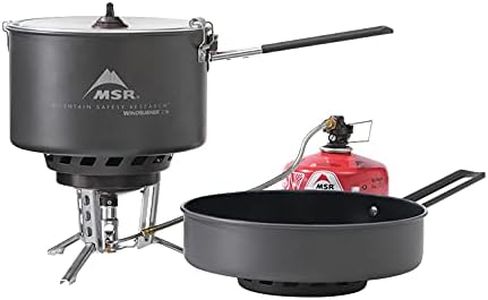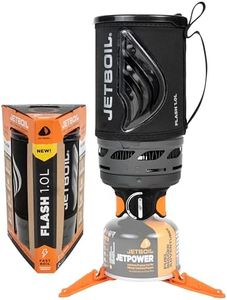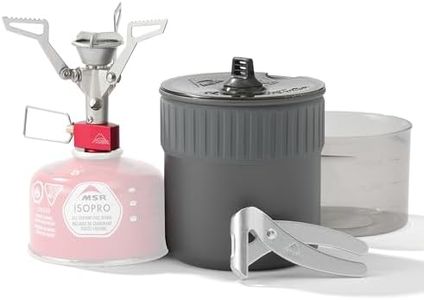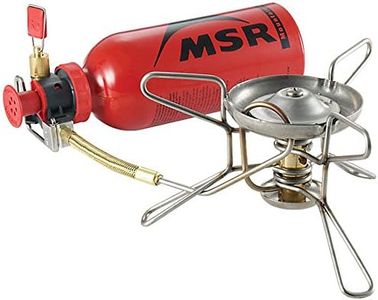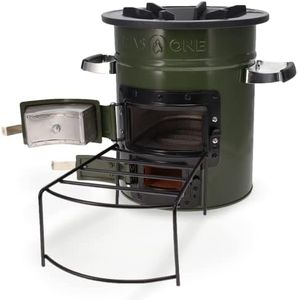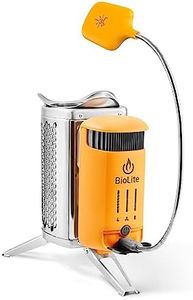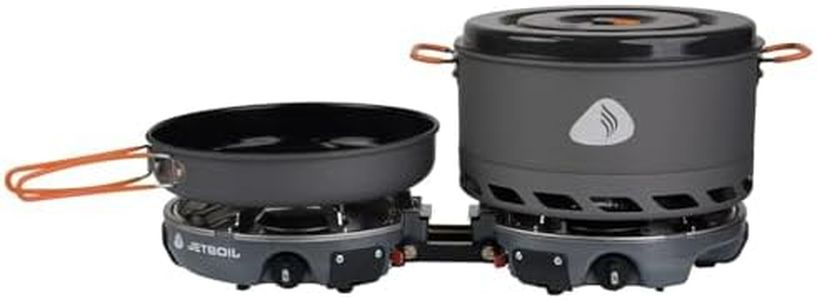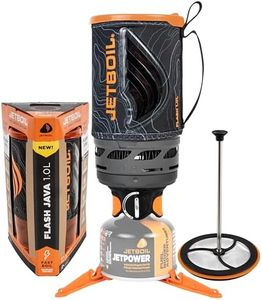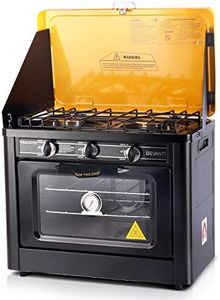We Use CookiesWe use cookies to enhance the security, performance,
functionality and for analytical and promotional activities. By continuing to browse this site you
are agreeing to our privacy policy
10 Best Camping Stoves
From leading brands and best sellers available on the web.#1
Winner
Buying Guide for the Best Camping Stoves
Choosing the right camping stove can make your outdoor adventures easier, more comfortable, and enjoyable. The best stove for you will depend on how you plan to use it, the type of food you want to cook, where you'll be camping, and how much weight and space you can afford to carry. Understanding the main features of camping stoves will help you match a stove to your needs, so your meals away from home can be as easy or gourmet as you wish.Fuel TypeFuel type refers to what powers the stove—common options include canister gas (like propane or butane), liquid fuel (such as white gas), alcohol, solid fuel tablets, or wood. This is important because different fuels have pros and cons regarding availability, burn performance in various weather, refilling options, and weight. Canister stoves are convenient and clean, while liquid fuel stoves work well in cold temperatures and at high altitudes. Alcohol and solid fuel stoves are light and simple but may be slower and less powerful. To decide, think about where you’ll camp most often: is fuel easy to find, do you expect cold weather, or is lightweight more important than speed?
Burner Power (BTUs)Burner power, often measured in BTUs (British Thermal Units), shows how much heat the stove can generate, which affects how quickly it can boil water or cook food. Higher BTUs mean faster cooking, but more power can also use fuel faster and may be harder to control for simmering. Low to medium BTUs are good for simple meals and solo or lightweight camping. Higher BTUs work well if you plan to cook for groups or need to boil water quickly in cold weather. If you'll be doing more than just heating water, or cooking for more people, you'll appreciate higher burner power.
Number of BurnersThe number of burners determines how many pots or pans you can use at one time. Single-burner stoves are compact and best for solo travelers or those who prepare simple meals. Double burners allow you to cook more than one thing simultaneously, making meal times much easier for groups or families. Think about your cooking style: if you want to prepare multi-dish meals or hot drinks alongside food, extra burners are helpful.
Weight and PackabilityWeight and packability cover how heavy and bulky the stove is when packed. This is critical for backpackers who need to keep their gear as light as possible, whereas car campers can manage with heavier, less compact models. If you’re backpacking, ultralight, compact stoves make sense. For car or RV camping, you can select sturdier options with bigger cooking surfaces. Match the weight to how far you’ll carry it and how much space you have.
Stability and Cooking SurfaceStability refers to how securely the stove holds your pot or pan, and the cooking surface is the space available for your cookware. Tall or narrow stoves can be tippy, especially with large pots. Wider, low-profile stoves with sturdy legs are safer for bigger meals or groups. If you often cook in windy areas or use large pots, look for a stove with a wide base and wind protection.
Ease of Use and MaintenanceThis includes how straightforward it is to set up the stove, light it, adjust the flame, and clean it after use. Stoves with simple designs and automatic igniters are quick to use, which is great if you want hassle-free meals. Complex stoves might offer more control or flexibility but may require more maintenance. Think about how much time you want to spend on setup and cleaning, especially after a long day outdoors.
